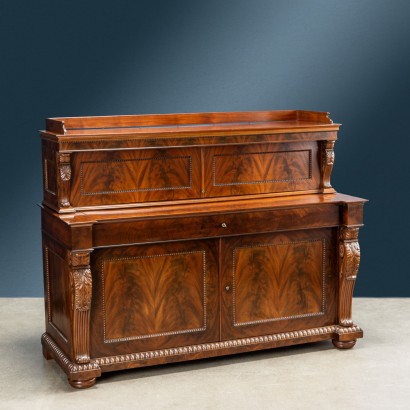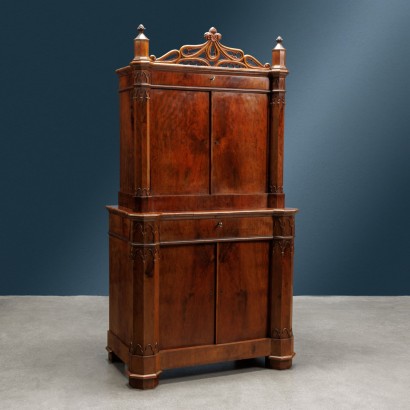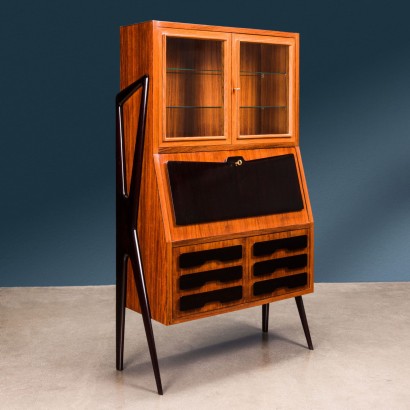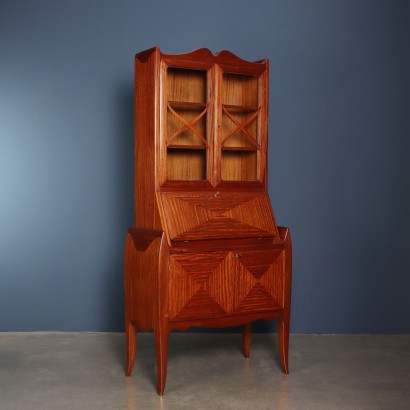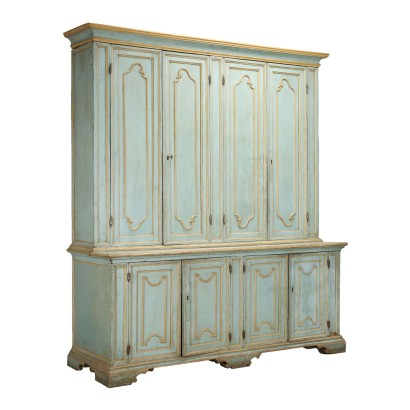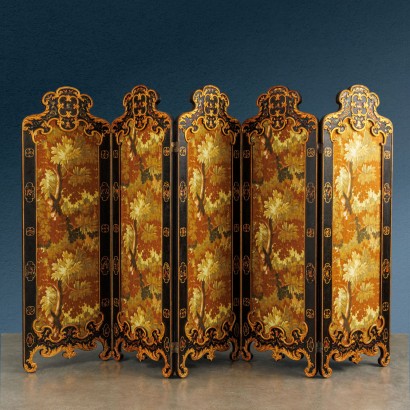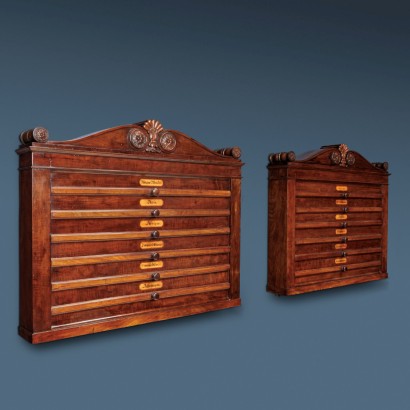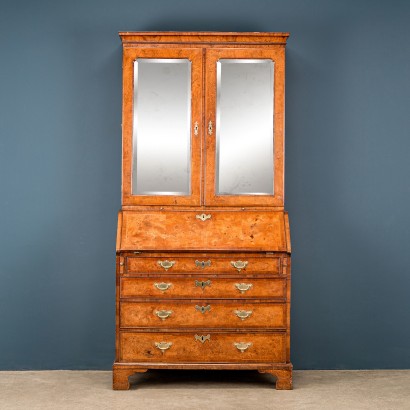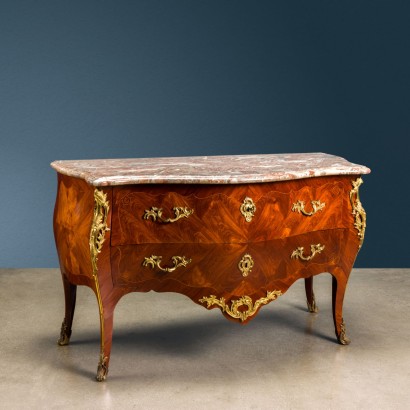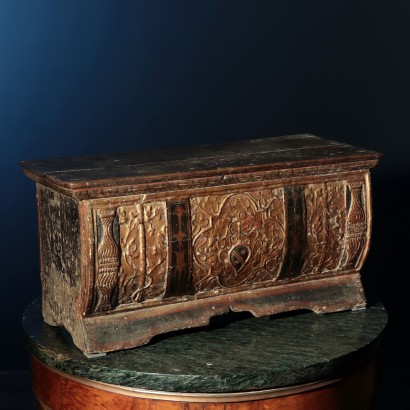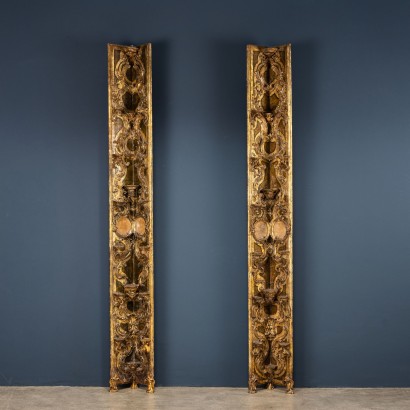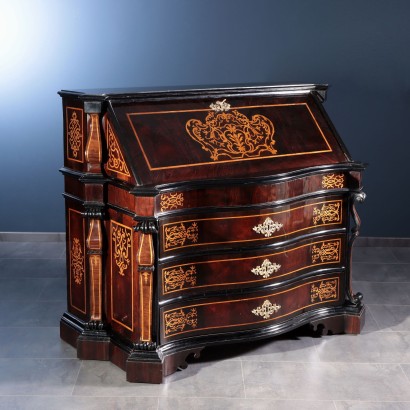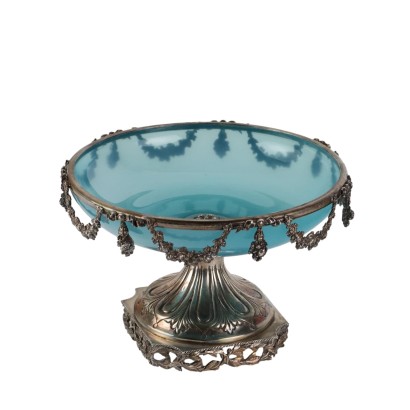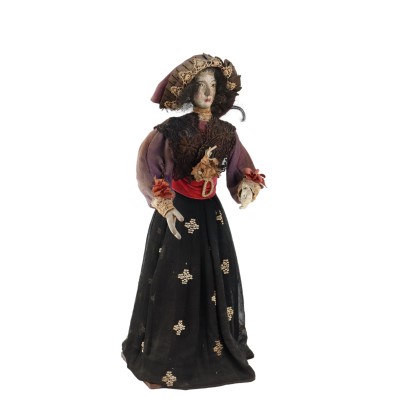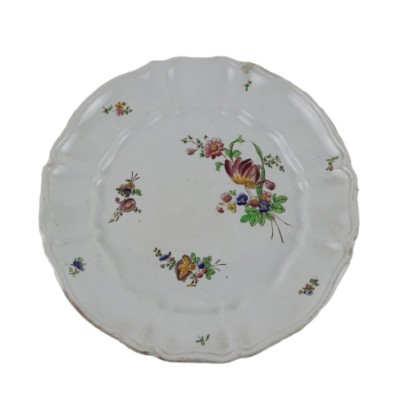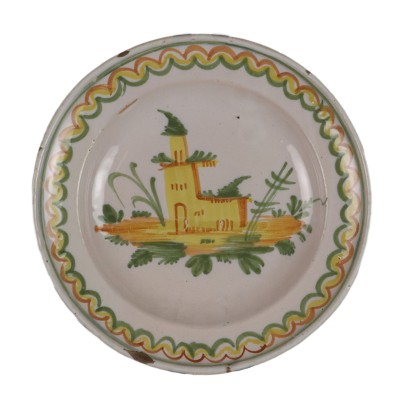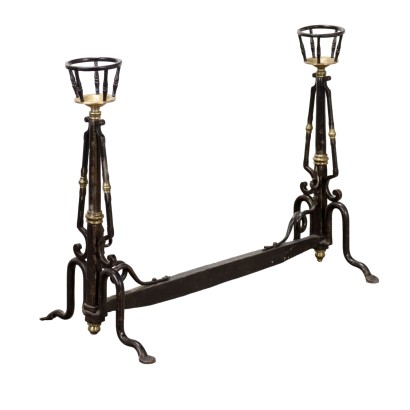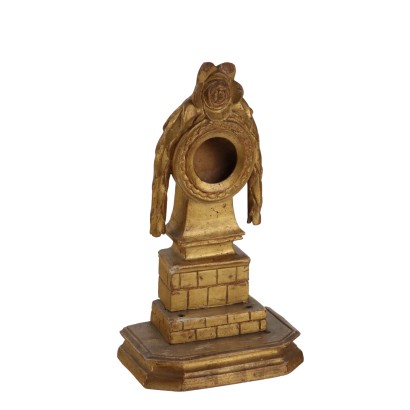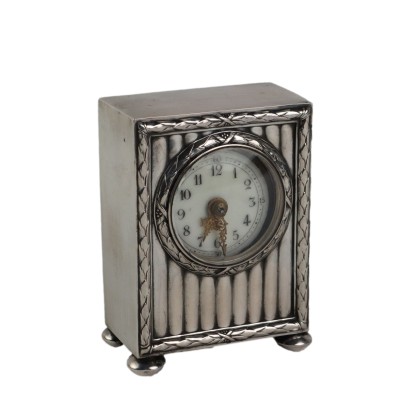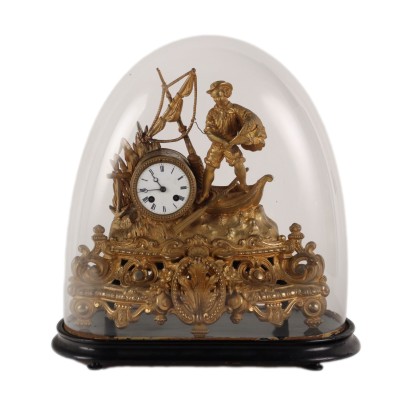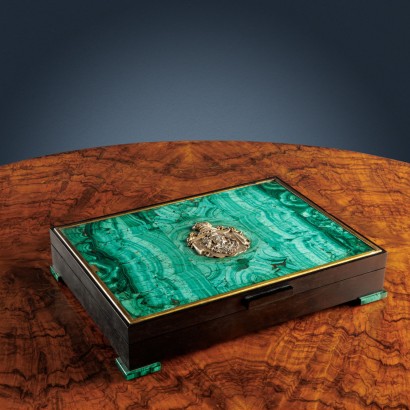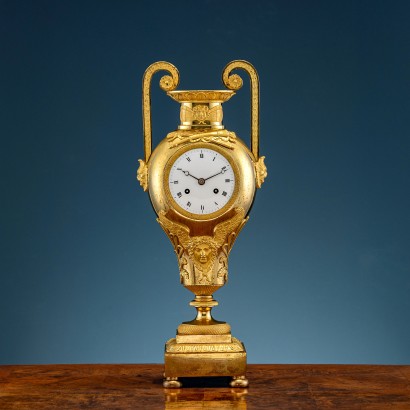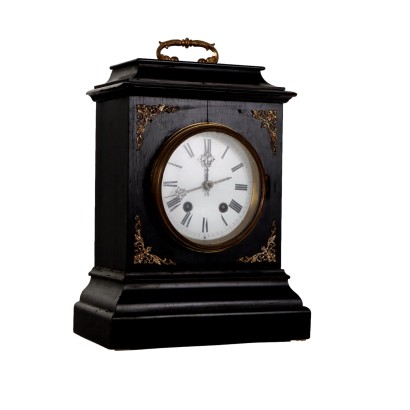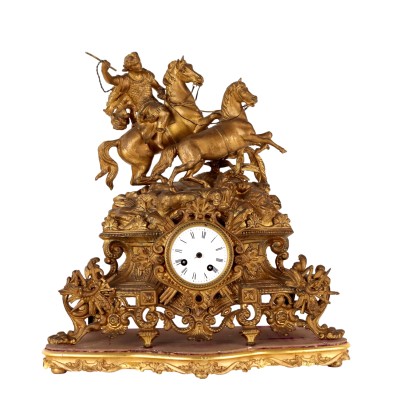Writing Desk Mahogany Italy XIX Century - Cupboard Writing Desk
Features
Cupboard Writing Desk
Age: 19th Century / 1801 - 1900
Origin: Genova, Liguria, Italy
Main essence: Sessile Oak
Material: Mahogany Feather Banded Veneer
Description
Center unit finished on all four sides. Made of oak, it is completely veneered in mahogany feather and decorated with carved mahogany moldings and pilasters. Consisting of two doors superimposed by a drawer under the top with an internal lectern. On the sliding surface there is a riser with a retractable door concealing internal drawers veneered in maple; wooden railing on the raised surface.
Product Condition:
Product in fair condition showing some signs of wear. We try to present the real state as fully as possible with photos. If some details are not clear from the photos, what is reported in the description will prevail.
Dimensions (cm):
Height: 128
Width: 164
Depth: 66
Certificate issued by: Enrico Sala
Additional Information
Notes historical bibliographic
This articulated piece of furniture was part of a library furniture attributable to the cabinetmaker Henry Thomas Peters. Of English origin, he moved his business to Genoa in 1817; Gabriele Capello was the cabinetmaker most used by the architect Pelagio Palagi for works at the Savoy court. For this reason his production is characterized by ornamental motifs derived from the "Palagian" taste, while a predilection for the use of mahogany is characteristic of his English training. In this furniture the virtue of the cabinetmaker emerges in the quality of the numerous drawers and pullers he creates and in the skilful use of the mahogany feather with which he perfectly conceals the two drawstring doors. Finally, the carving is the distinctive feature of his production; the pilasters present motifs that are found in his furnishings and which are evidenced in the desk he created for King Carlo Alberto following the instructions of Pelagio Palagi. If it is true that there is no shortage of furniture signed with this type of carving, the piece of furniture with the most points of contact with the one in the description is another desk that Peters made for King Charles Albert, preserved in the Royal Castle of Racconigi. This piece of furniture is larger than ours, with a convex center and some parts in mahogany root in addition to the more usual feather but some solutions are present precisely. Not only the pilasters but the riser, with the central flap door and with a first Vago lock and also the drawers inserted in the cornice under the top with the sliding top, leave no doubt about the same authorship of the two pieces of furniture. Reference bibliography: - Noemi Gabrielli, Racconigi, San Paolo Banking Institute of Turin, Turin, 1972; - Roberto Antonetto, Gabriele Capello “Moncalvo” Cabinetmaker to two kings; Umberto Allemandi & C., 2004; - Antonella Rathscüler, Henry Thomas Peters and the furniture industry in the nineteenth century, Il canneto editore, Genoa, 2014.Age: 19th Century / 1801 - 1900
19th Century / 1801 - 1900Main essence: Sessile Oak
Under the name of oak or oak various types of woods derived from plants of the genus quercus are grouped. They are always resistant, hard and compact woods. Oak is lighter than oak, both are used for more rustic furniture or for the interiors of French and English antique furniture. In other processes it was gradually replaced by the advent of exotic woods considered more valuable since the 18th century.Material: Mahogany Feather Banded Veneer
Other customers have searched:
Ecco qualche spunto dal nostro blog e da FineArt per scoprire di più sul tema credenze:
Leggi di più
Una credenza che dialoga con il passatoCredenza doppio corpo, tesoro di intagli e decorazioni
Piccolo stipo, grande arredo
Stipo toscano a cavallo tra XVI e XVII
Credenza Barium di Luciano Frigerio
Credenza, Mathieu Befort Jeune, Parigi, terzo quarto XIX secolo
Mobile anni '60
Highboard '503' Gianfranco Frattini per Bernini
Mobile bar anni '40
Mobile Bar anni '40 '50, manifattura italiana
Sull'antiquariato in generale dai un'occhiata anche a:
Classic Monday: da un pezzo dei nostri magazzini alla storia dell'antiquariato
L'antiquariato dalla A alla Z: il Dizionario dell'Antiquariato
Il dizionario dell'antiquariato - Lastronatura
Il dizionario dell'antiquariato - Mascherone
Il dizionario dell'antiquariato - Natura morta
Il dizionario dell'antiquariato - Opificio
Il dizionario dell'antiquariato - Pastiglia
Il dizionario dell'antiquariato - Savonarola
Il dizionario dell'antiquariato - Rosone
Product availability
The product can be seen at Cambiago
Immediate availability
Ready for delivery within 2 working days from ordering the product.



